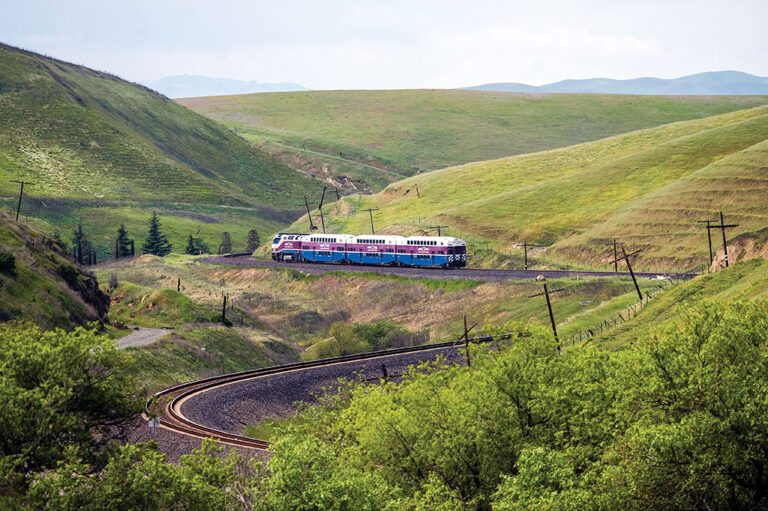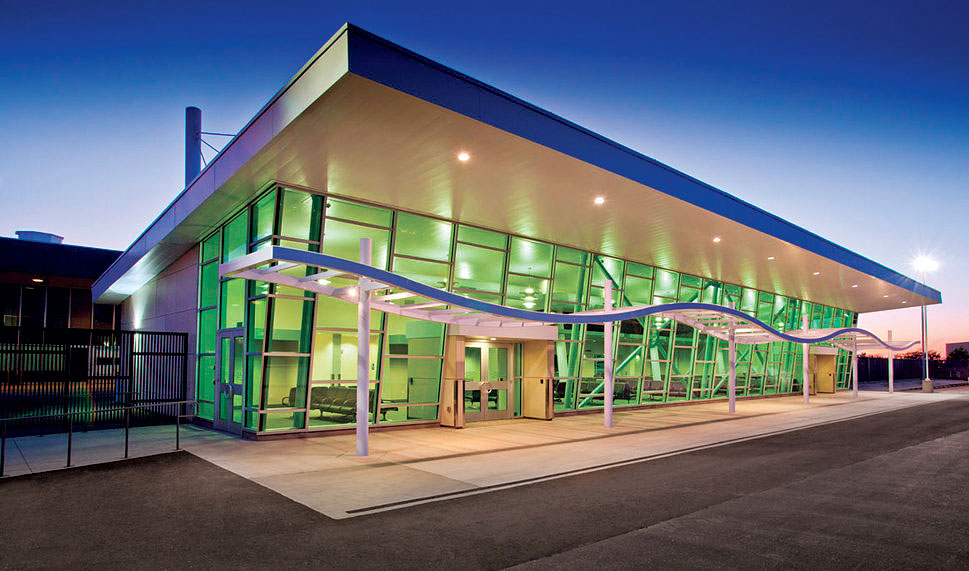San Joaquin County: Go Anywhere From Here
From commuters to cargo, the transportation network in San Joaquin County fuels the region's forward momentum.

Whether for business or leisure, a strong transportation network in San Joaquin County provides easy access through California and far beyond.
For instance, companies that ship freight by rail can utilize the Stockton Terminal & Eastern Railroad that connects to Class I carriers BNSF and Union Pacific intermodal cargo facilities.
Amtrak commuter rail passengers can board at the San Joaquin Street Station in Stockton, with destinations to cities including Bakersfield, Modesto, Oakland and Sacramento. Also available is the commuter rail service Altamont Corridor Express, or ACE, that travels throughout the region to connect cities from Stockton to San Jose.
In addition, the San Joaquin Regional Transit District operates public bus service in Stockton, and the cities of Escalon, Lodi, Manteca, Ripon and Tracy also operate their own individual bus systems.

Serving a Region of 1.2 Million People
Air travelers in San Joaquin County have the convenience of Stockton Metropolitan Airport (SCK), which offers commercial flights to Las Vegas and Phoenix. Besides commercial flights, SCK accommodates general aviation customers, air cargo airlines and the California Army National Guard.
“The population of San Joaquin County is growing substantially, so air traffic demands are also increasing for us,” says Richard Sokol, airport director for San Joaquin County. “Stockton International already serves a region of 1.2 million people, and we’re looking into eventually adding commercial flights to Los Angeles, San Diego, Denver and Dallas.”
A total of 100 general aviation aircraft are parked on the airport grounds, and SCK accommodates more than 55,000 total airport operations each year. Currently, a $100 million industrial park project called Airpark 599 is under construction next to the airport, and it will become one of the largest warehouse facilities in Northern California.
“With the opening of Airpark 599, and our excellent location between Interstate 5 and California 99, we are gearing Stockton Metropolitan Airport for big growth and modernization,” Sokol says.
Other general aviation facilities serving residents and businesses in the region are Lodi Airport, New Jerusalem Airport and Tracy Municipal Airport.
Port of Stockton: A Major Player
Another key contributor to the transportation network in San Joaquin County is the Port of Stockton, which handles about 4.5 million metric tons of cargo annually.
“The port provides more than a $1.5 billion economic impact for the region, and we are completely self-sufficient – we never burden taxpayers for money,” says Kirk DeJesus, Port of Stockton executive director. “We don’t take money out of the community. We just put money into the community.”
Port of Stockton is a bulk and break-bulk port, meaning it can handle any cargo that doesn’t go into containers.
“We often get overlooked because we aren’t a container port like Los Angeles, Long Beach and Oakland,” DeJesus says. “There are still people who live in Stockton that are surprised a port is in the city, but we transport many, many tons of cargo every day by rail, barge, truck and pipeline.”
Ready to Go
The Port of Stockton has 163 business tenants on its massive property, and there are still about 500 vacant acres that can be developed.
This inland Stockton port currently has more than 7 million square feet of covered storage space, and almost all of that space is occupied.
“There are two roadways, two rivers and two railroads connecting to the port, and we are currently rehabbing and upgrading our railroad system with nearly $60 million in projects,” DeJesus says. “Those projects include installing dual tracks at our entrance and adding a new rail bridge to receive heavier and longer trains. We currently handle about 60,000 rail cars per year but anticipate soon having 100,000 rail cars go through here annually.”
DeJesus adds that commodities handled at Stockton include fertilizer, cement, soda ash and rice, and more than 10,000 jobs are connected to the port.
“We are also working on a big export project that could double our exports within the next two or three years,” he says. “Many people don’t realize how critical the Port of Stockton is to the Central Valley and the state. We are vital to the economy.”
Get to Know San Joaquin County
Want to learn more about living and working in San Joaquin County? Check out the latest edition of Livability San Joaquin County, California.



